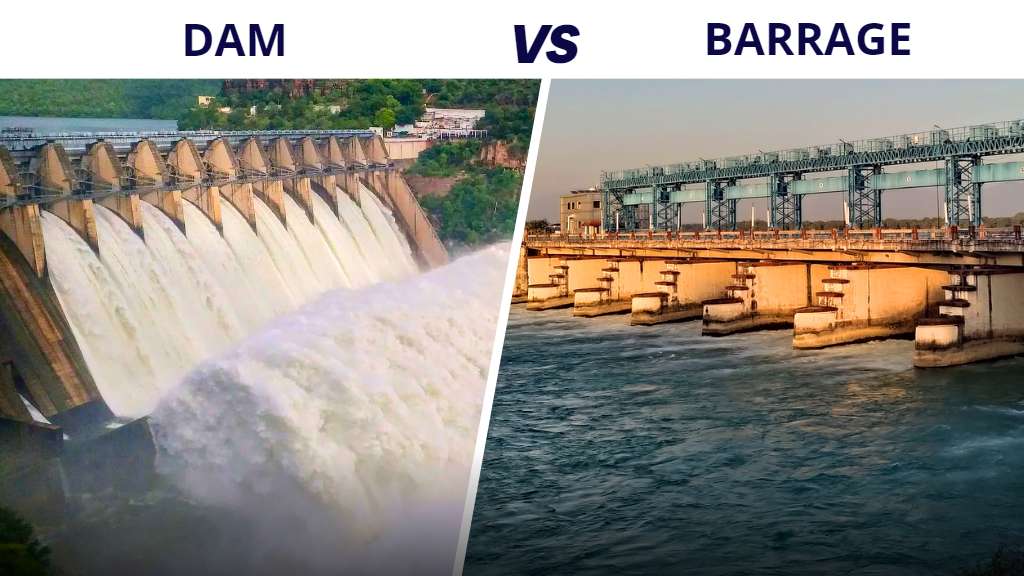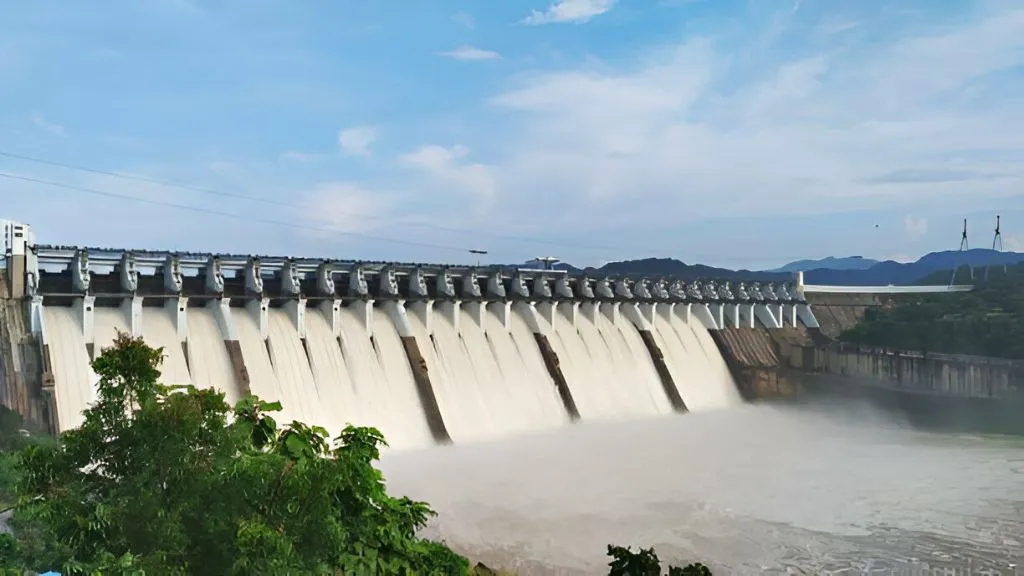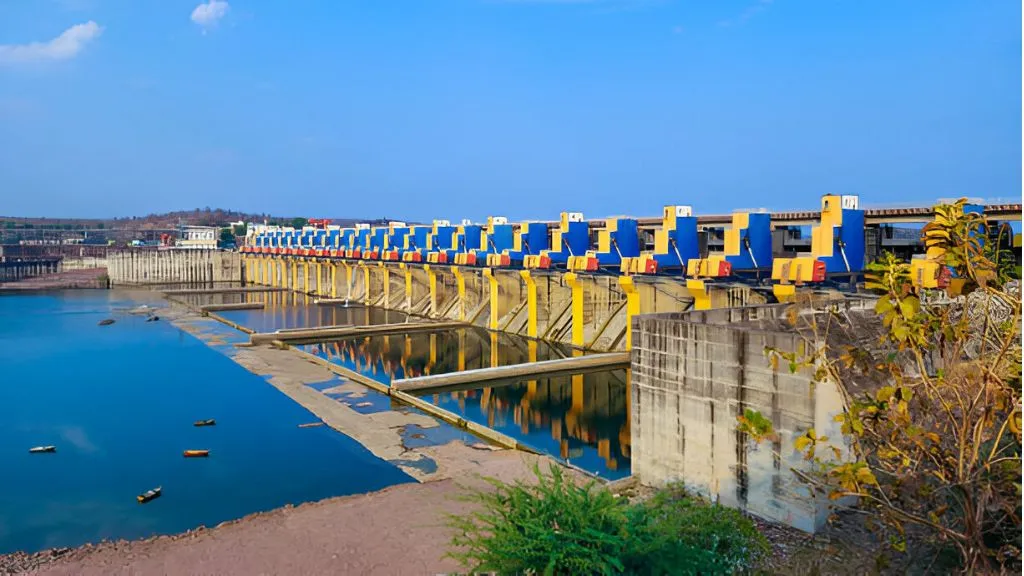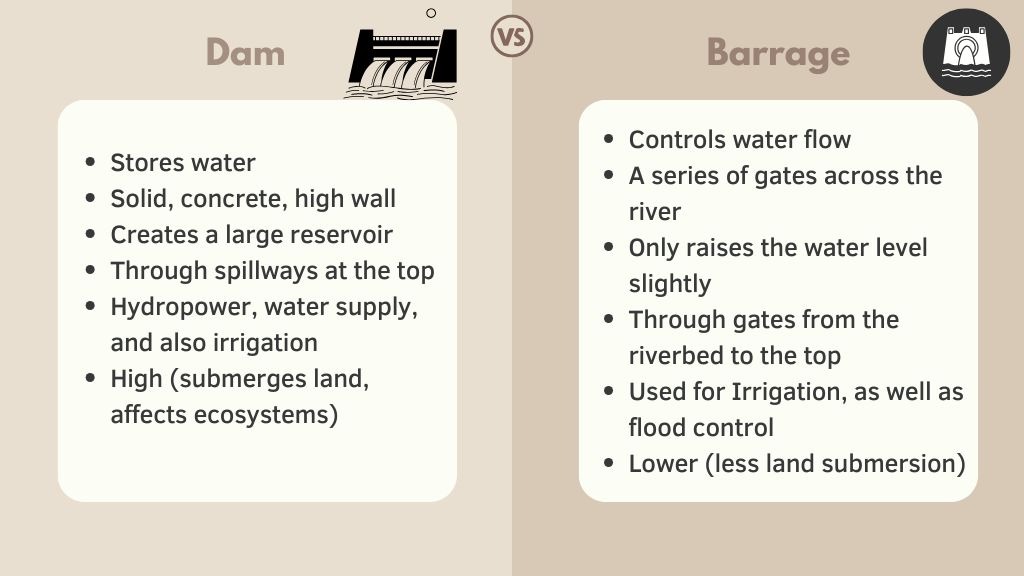Property Geek
We provide the actual and accurate information with unbiased user driven reviews to our viewers, to help them see the best and find the best!
View posts
Sometimes when you check out a river, you notice a huge concrete structure right in the middle. You might think, “Oh, it’s a dam!”—but is it really a dam or can it also be a barrage? When you first see them, they look very similar in looks.
Both manage water, constructed across the rivers, and serve humans for their water needs. But do you know, they aren’t the same! If you’ve ever questioned what the difference is between a dam and a barrage, stick around and read along.
Let’s clear things up—what makes a dam and barrage altogether different works, how they function, and why they’re important. By the end of this blog, you can easily tell which is a dam and which is a barrage.
But before we dive into the barrage vs dam comparison, let’s have a clear understanding of what are a dam and a barrage.

A dam is a strong concrete wall, and it helps to block the freely flowing water. These dams create a reservoir behind them by stopping the water bodies usually the rivers. And this water that is stored in a big reservoir can then be taken for various uses such as power plants or drinking and farming, and even helps manage the floods.
Dams are tall and heavy. Instead of letting water just flow by, they hold it back. When necessary, they release the water in a controlled way through openings called spillways and gates.

A barrage is a type of structure used to manage water. It is built with several gate-like structures. As it’s also built across the river, it has several gates instead of a big typical wall as in the dam.
The gates are opened whenever necessary and can easily be closed to control the flow of water. It just doesn’t holds the water back but lets it through using the gates.
Unlike a dam, a barrage doesn’t create a deep pool of water. It only raises the water level a bit and helps redirect it for purposes like farming, boating, or managing floods.
After the definitions of a dam and a barrage, let’s get into the difference between a dam and a barrage.
A dam and a barrage are both structures built across rivers or streams to control the flow of water. However, there are some key differences between the two:

Even though barrages and dams have so many uses but they also possess a few things that can harm the environment.
Dams can greatly change the ecosystem. They can flood large areas, displacing wildlife and communities. Plus, they alter the natural flow of rivers, disrupting fish migration.
Barrages are less harmful, but they still affect local environments. They can change how sediment moves and alter water flow, which sometimes makes it tough for aquatic life to adapt.
So, while they’re useful, they also come with responsibilities. Finding a balance between human needs and nature’s health requires thoughtful planning.
You know those little barriers you see across streams or small rivers? Those are check dams. They help stop soil from washing away and support groundwater recharge.
Think of them as mini dams that are important for conserving water.
Do you know that Banasura Sagar Dam, in Padinjarathara, Wayanad in Kerala, is the largest earth dam in India and the second largest dam in Asia.
So, the next time you see a giant concrete structure on a river, take a closer look. Is it storing water, or just controlling its flow? If it’s creating a reservoir, it’s a dam. If it has gates controlling the flow, it’s a barrage.
Both are important, both serve different purposes, and both need to be managed responsibly. Whether it’s for electricity, farming, drinking water, or flood prevention, these structures shape the way we use one of Earth’s most precious resources—water!
Now, if you ever hear someone say, “Aren’t a dam and a barrage the same thing?”—you’ll know exactly how to explain it!